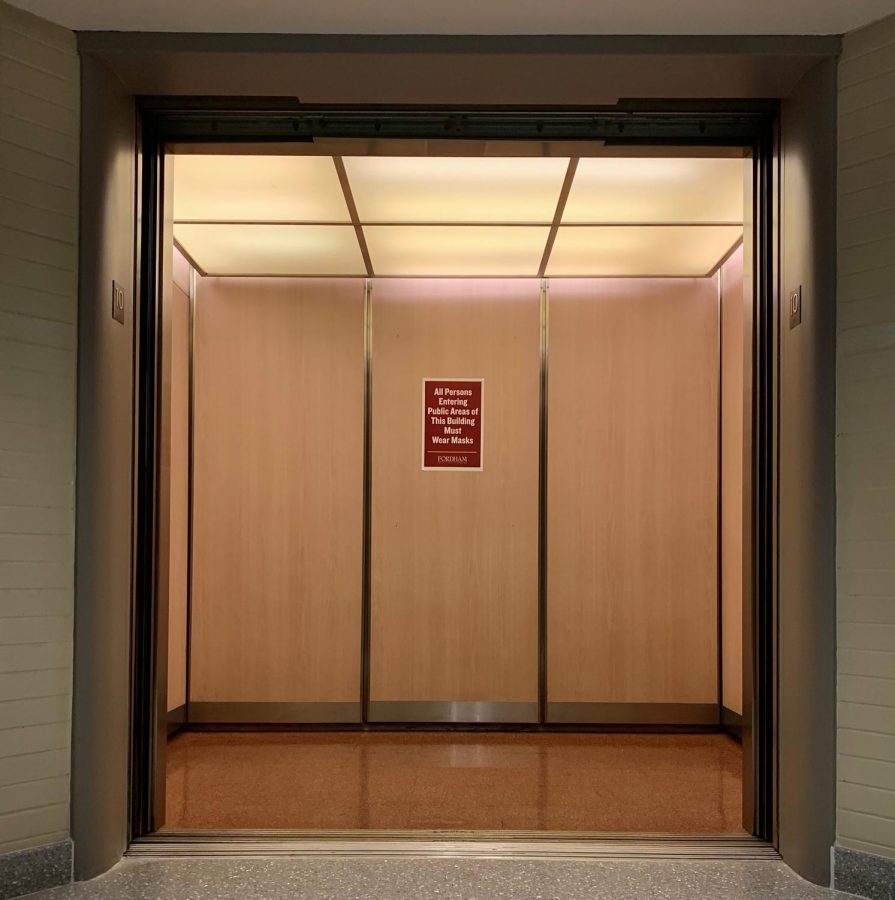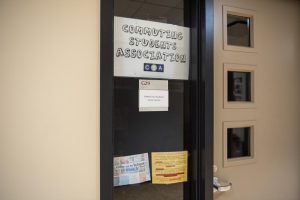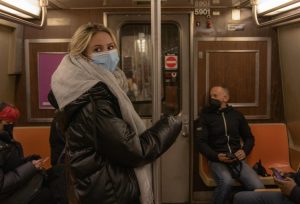Students Lack Confidence in Fordham’s Elevators
Four reported incidents on campus have led to increased concern over elevator safety and capacity
Out-of-order elevators can be a common occurrence around campus, and the safety of elevators has been a concern.
March 4, 2022
Since the beginning of the spring semester, four reported instances of students getting stuck in elevators at Fordham’s Lincoln Center campus have raised concerns about the safety of the elevators on campus.
According to Robert Dineen, director of Public Safety at Lincoln Center, Public Safety has responded to each of the four instances. These elevator breakdowns have occurred in the Leon Lowenstein Center, McMahon Hall, the 140 West Building and McKeon Hall.
Cheryl Mendoza, Fordham College at Lincoln Center (FCLC) ’25, said that she saw students stuck in one of the McMahon elevators during her first week at Fordham in the fall semester.
Public Safety responds to reports of stuck elevators by checking in with the people inside the elevator cart via the intercom system to ensure that they are safe, Dineen noted. They then assist occupants out of the elevators by bringing in the university’s elevator technician and members of the Facilities Management team.
“In each case this semester, the students were released from the elevator without further incident or need for additional assistance.” Robert Dineen, director of Public Safety at Lincoln Center
“In each case this semester, the students were released from the elevator without further incident or need for additional assistance,” he said.
Dineen also emphasized that the staff tests the elevators through monthly, semi-annual and annual inspection testing.
“We also have a dedicated on-site elevator technician assigned to the Lincoln Center campus who monitors and maintains our elevators to ensure they are operating in a safe and secure manner on a daily basis,” Dineen added.
Students still expressed anxiety over McMahon elevators. Cristina Flores, Gabelli School of Business at Lincoln Center ’24, said overcrowding is a significant issue for her in the McMahon elevators.
“I have had experiences in which there are just too many people in the elevator, and you can feel that the amount of people is way too much,” she said. Flores described how when McMahon elevators are crowded, everyone’s weight makes the elevator seem to “sink” slightly.
Mendoza also expressed how she lacked confidence in the safety of McMahon’s elevators.
“The crazy thing is that the elevator worked perfectly fine the next day.” Sophia Jugeli-Giroux, FCLC ’25
“I still take them, but I walk down the stairs instead of taking the elevators down,” she said.
Besides elevators completely breaking down, students also reported technical difficulties with the elevators in McMahon.
“They glitch,” Sophia Jugeli-Giroux, FCLC ’25, said. According to her, there was an instance where the elevator doors would not close.
“The crazy thing is that the elevator worked perfectly fine the next day,” Jugeli-Giroux said.
“My main issue with them is how cramped they get, which doesn’t feel safe already because the elevators are known to be faulty but especially with COVID, it’s extra scary.” Cheryl Mendoza, FCLC ’25
Students also expressed similar sentiments about the capacity issues with the elevators at Lowenstein. Though no technical problems were reported, students said the Lowenstein elevators have constant traffic and are delayed when students try to take them in between classes.
“My main issue with them is how cramped they (the elevators) get, which doesn’t feel safe already because the elevators are known to be faulty but especially with COVID, it’s extra scary,” Mendoza said.
Jugeli-Giroux encouraged students to take the stairs instead of the elevators if they can and if their classes occur anywhere below the fifth floor.
Flores added that Fordham could limit the number of students in elevators during daytime “rush hours.”













